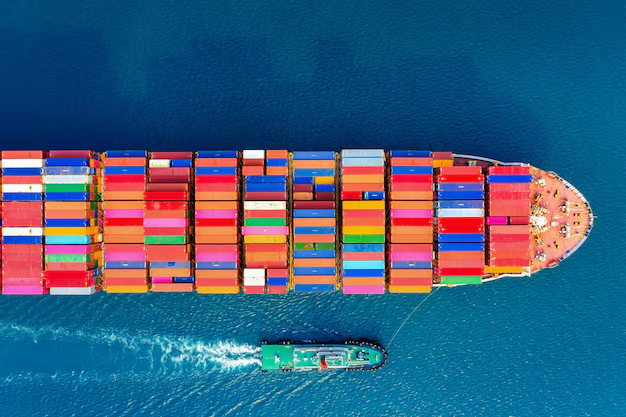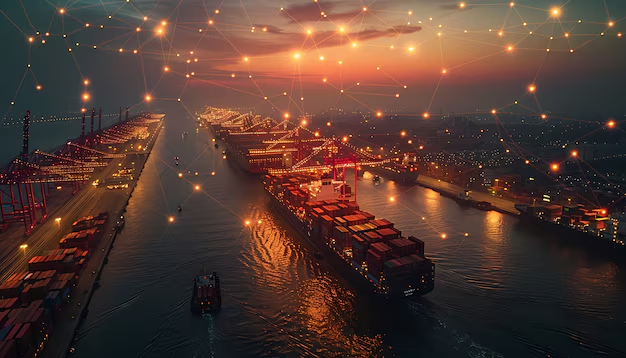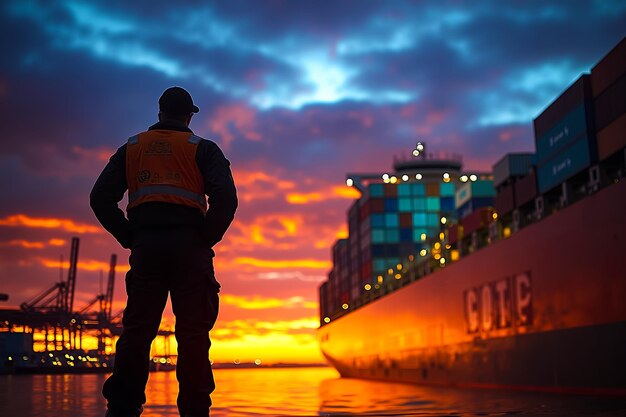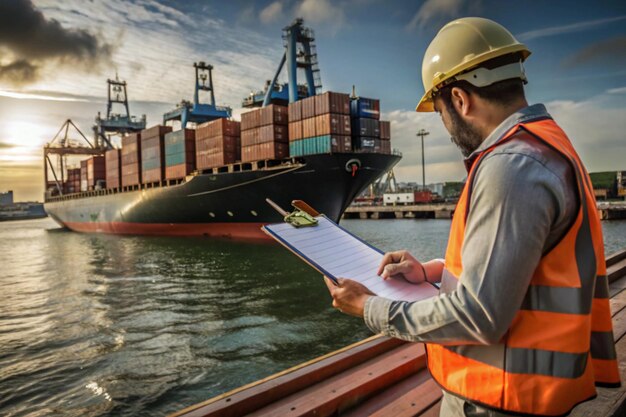
Table of Contents
Sea freight dominates in world trade, where goods are moved from one end to the other end of the ocean. It is an essential mode of transport in the international transport industry.
It thus helps businesses to transport bulk and high volumes of products at a reasonable cost, which makes a very important aspect of the logistics strategies for businesses of any size.
If air flight has a more time factor, sea transport in case of transportation of heavy and bulky goods is less expensive for the shipper.
Seaborne shipment entails shipping goods in containers on board a container vessel, making it suitable for bulk orders. This mode of transport is not only cheap but also allows a variety of goods to be shipped, from machinery to household items.
Nevertheless, it is crucial to get acquainted with the various parameters associated with sea freight, such as the costs of sea freight, sea transit time, customs clearance, and the goods most appropriate to be shipped via the sea.
This article, while proceeding, focuses on sea freight, where many relevant issues are brought forth in the hope of addressing a key element in international commuting.
In conclusion, there will be wisdom on how to utilize sea freight in this global and competitive market in relation to the movement of cargo in good time and cost consideration.
What Are the Advantages of Sea Freight?

In carrying out international trade, sea freight has proved to be the most beneficial option due to various factors such as distance and carrying capacity endorsements.
Cost While this is the most obvious benefit that comes with sea freight, it has to be put forth. While airlifting and other costly ways of moving goods are very common in logistics today, shipping by sea is the cheapest means of transport, preferably for large and bulky goods.
Capacity is yet another advantage. This mode of transport can carry a diverse range of commodities from the primary to the final stage of commodity production.
Heavy machinery, for instance, is often shipped in large containers. With most containers being able to carry a good load wide load, this implies that corporate bodies are in a position to carry most of their products in one haul.
Apart from that, there is less pollution of the environment. When this gets translated into a shipment, it is more encouraging as it leads to more savings on emissions, particularly if the business is carbon-conscious.
Given the many ports present around the globe, businesses do not face difficulties identifying routes with the least delivery time with the least cost.
It is for delivery w.est, not e .nav cl tai ma..si mdi ca Prelude Within the same wave-cloud facilities and high-capacity at reasonable prices. In the last pages, a series of low-cost sea freight is characterized by savings on costs on capacity-including categories.
Are there things that are transported using the sea only?

One of the interesting things about shipping stuff by sea is that it is possible to carry almost anything regardless of its shape and size.
Hernia can be transported by different types of transport mediums, including up. ‘Thank ye, reading! perishables and other products that are usually perishable along this road are able to come in different ways.
Sea freight is also used in the shipping of heavy and bulky goods, including machines, construction raw materials, and automobiles.
Also, sea freight is efficient for the movement of agricultural products such as grains or, even more, dirty products such as coal or chemicals.
There are also these types of goods that need to be shipped only in bulk, so sea freight is the best choice owing to the volume and costs incurred.
However, I still need much care and to be on time. In such cases, the businesses need to consider the type of their cargo and ascertain whether it would be best to undertake sea shipping or, at times, air transport would suit best.
To summarize, owing to the fact that sea transportation can handle numerous types of cargo, including heavy machinery, bulk commodities as well as perishable products, there is a wide acceptability of sea freight by businesses participating in international trade.
How are the Sea Freight Costs calculated?

Even businesses already familiar with the prohibited scope of any questions made by margins and surcharges must clearly understand how sea freight costs are arrived at.
A number of these are the class of goods. This total amount includes the cubic volume and weight, the shipping itinerary, and any other relevant costs incurred.
Most, if not all, shipping firms let them charge what is highest, which is known as “chargeable weight.” In other words, all businesses need to provide correct dimensions as well as weights to prevent unforeseen costs.
The port fees involve expenses that arise from the provision of off/unloading of the freight at a specified designated port.
In contrast, terminal handling fees involve expenses incurred during this offloading process. Import duty prices are not consistent as they are dependent on the importing country’s rules and regulations and what goods are being imported, which require planning.
There is the aspect of insurance. Although it is not a necessity, it is wise to have some form of cargo insurance that will cover one against any losses that might arise in the course of it being in transit. The insurance cost depends on the estimated worth of the shipped cargo.
When it comes to shipping costs, organizations must estimate all the factors involved in sea freight shipping accurately and comprehensively in order to prepare realistic sea freight shipping costs.
All these will allow companies to make the best possible moves and select the most beneficial shipping solutions with respect to their budgets.
What Is The Duration Of Sea Freight?

The duration taken by sea freight in reaching its final destination depends on many factors which include but are not limited to the shipping route, congestion on the port, and the shipping line.
Sea freight is considered to be slower than air freight, and it enables shipments to be done within a period of a few days to several weeks, depending on where the shipment’s origin is.
One of the shipments from Asia arrives at the West Coast Port within fifteen to twenty days, whereas, to the Eastern shores, the time would increase owing to other diseases because one must pass through the Panama Canal.
There is always the possibility for risks and problems, such as delays resulting from customs checks, heavy traffic in ports or poorly organized logistics, which are all aimed at satisfying the customer’s requirement in the end.
To ensure that there is no embarrassment when the goods arrive, there is a need for the business to get input from the freight forwarders who specialize in the particular shipping lines and type of goods.
They will maximize their efficiency as the goods are anticipated and save on unnecessary operating costs in the waiting period.
In conclusion, acknowledging that it takes longer to send goods by sea freight than by air freight due to various reasons such as ship delays and port waiting, there is a better way to plan for the unforeseeable consequences such as delays than this.
What Are the Customs Requirements for Sea Freight?

Customs documentation requirements are and will always form part of the sea freight operation, including but not limited to the measures adherence that is noticed when importing goods internationally.
There are laws in every jurisdiction governing the movement of goods inside and outside the country. Following these laws is essential if goods are to be pushed through.
Some of the common documents that are used for sea freight include a bill of lading, a commercial invoice, packing lists, as well as permits or licenses if any.
A bill of lading is defined as the complete delivery of goods which can be legally evidenced by the receipt as well as a contract on the transportation of those goods.
Contains a contract between the shipper and the transport company. In contrast, the commercial invoice contains all the details related to the transaction, such as the price of the cargo.
Businesses must know these customs taxes and duty fees as they may differ considerably depending on the commodities being shipped out and the laws of the importing country.
Business enterprises may opt to hire a customs clearance agent or a freight forwarder who knows the laws of both the exporting country and the importing country as a way of making the clearing process more efficient.
As a last word, all those companies taking part in international services are obliged to know the customs responsibilities with respect to anything that brings sea transport to nature.
But actually, making the claim and waiting for its processing without much success is possible. Everything regarding Your Sea Freight.
However, by working ahead and having the right documentation, companies can ensure conformity to the laws governing customs.
FAQ’s
Q: What is sea freight based on your understanding?
Sea freight can be termed as the carriage of goods in shipping containers through the use of cargo ships to cross oceans and seas. It is mostly used for bulk and hefty shipping purposes.
Q: What does the term ‘DO’ refer to in the expressions of sea freight?
“DO” in sea freight involves a “Delivery Order,” a document proving the authority to release the cargo to the person specified on delivery after it arrives.
Q: Why sea freight?
The reasons why sea freight is used are
- its cheapness,
- serving many goods of bigger volumes and
- cutting up the various and weightier articles too at long distances.
Explain how sea freight works.
In the process of sea freight, the necessary shipment is booked with a relevant shipping line; other necessary shipping documents are prepared, the cargo is prepared and loaded onto a vessel, and clearing of the goods is done before delivery.
Q: What criteria do they use to compute sea freight?
Usually charge is computed depending on the greater volume or weight of the shipment either in cubic meters or in tonnage.
Conclusion
Sea freight is a key component of international trade as it helps to transport a large number of goods over long distances more efficiently and at a lower cost than any other means of transport. With benefits such as cost efficiency and mass volume capacity as well as being irrelevant as to what exactly can be carried onboard, sea freight gives the most benefits to any businesses within the entire commerce, including small businesses. Nevertheless, other important aspects like cost calculations, transportation time planning or customs have to be mastered in order to facilitate your logistics management.

